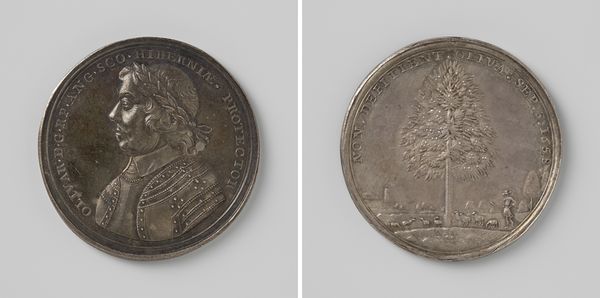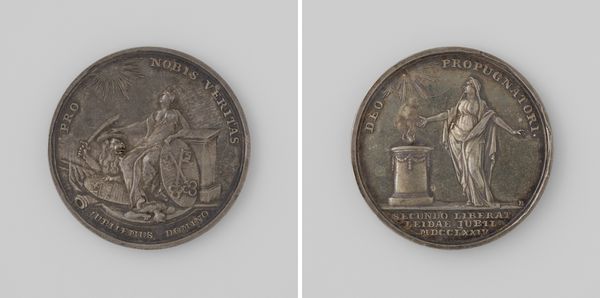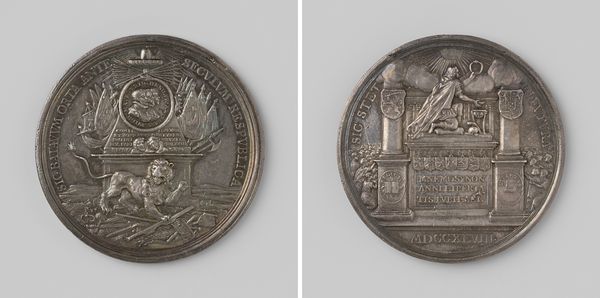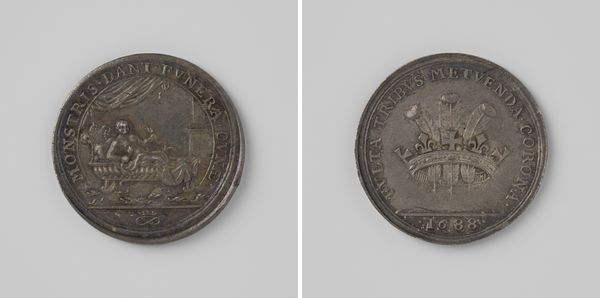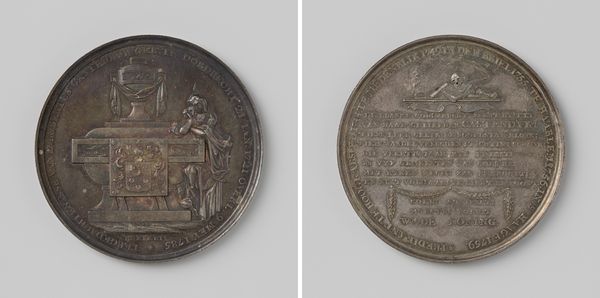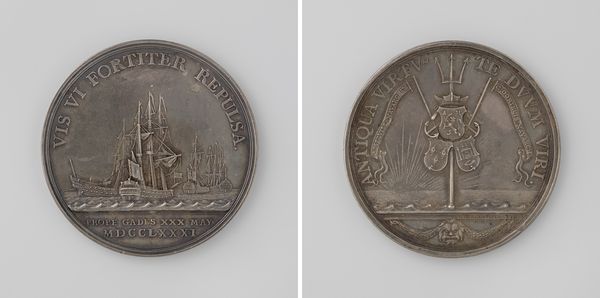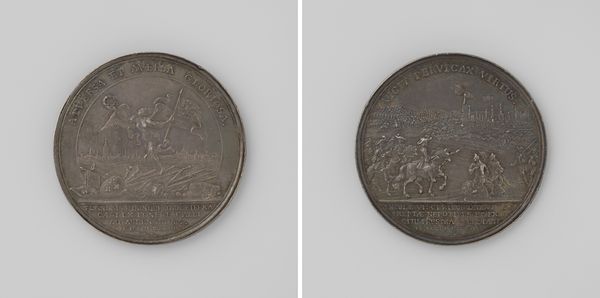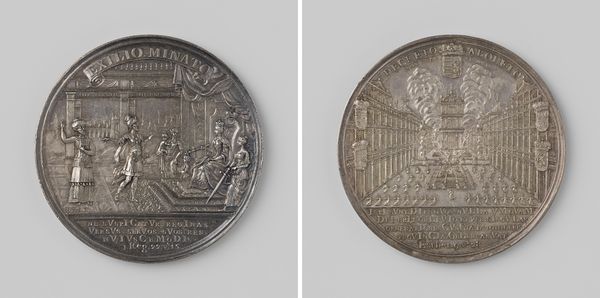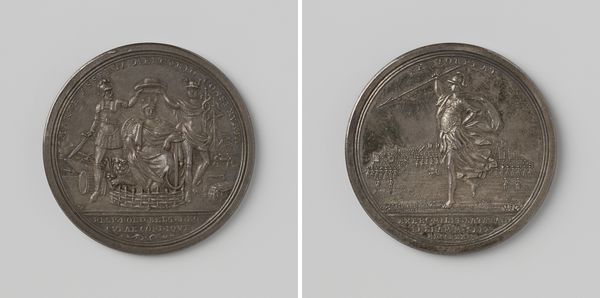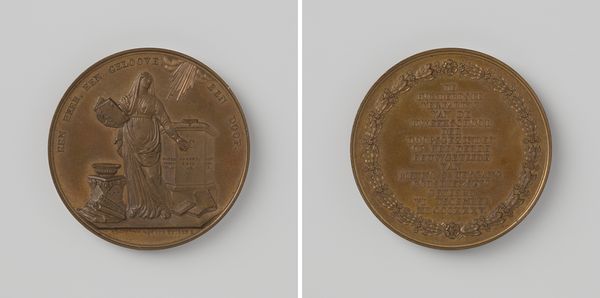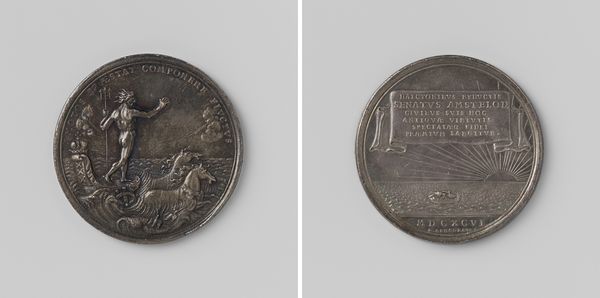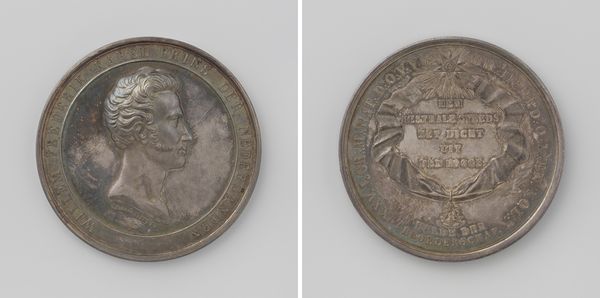
metal, relief, sculpture
#
portrait
#
baroque
#
metal
#
sculpture
#
relief
#
sculpture
#
history-painting
Dimensions: diameter 5.5 cm, weight 61.27 gr
Copyright: Rijks Museum: Open Domain
Curator: Here we have a relief made in 1743 to commemorate Pieter van der Camer on his twentieth time serving as burgemeester, or mayor, of Haarlem. Editor: The stark, almost metallic sheen immediately grabs me. The detail is incredible; you can practically feel the coolness of the metal and discern all its textures and nuances. Curator: This work is an example of Baroque commemorative art rendered in metal. Given the nature of its creation, how do you think this affects our experience and interpretation of it? Editor: Knowing this object functions as an honorific marker greatly shapes my understanding. The symmetrical balance of imagery seems designed to convey power and lasting legacy, aligning with its inherent purpose. I want to explore this contrast between object and meaning further. Curator: I find the social context very intriguing. The artist, Martin Holtzhey, aimed for the highest honor, perhaps hoping for future commissions from elites. Note how this single, commemorative piece represents wider political structures and class relations in 18th-century Dutch society. Editor: Yes, I note that but my immediate consideration turns to semiotics; what visual symbols and artistic techniques did Holtzhey use? What’s the relationship between symbolic figure on one face versus coat of arms and familial regalia on the other? I find myself more immediately engaged in deciphering such symbolic language, seeking layers of coded messaging meant only for elite viewers of the time. Curator: Agreed. Looking more closely at Holtzhey’s technical mastery reveals this medal wasn’t merely created but also actively promoted, distributed among select circles, acting as physical affirmations of political alliance. It underscores a society where honor wasn’t only earned, but quite deliberately *crafted* and strategically deployed via objects like this. Editor: Seeing the artistic achievement nested within those intricate historical conditions definitely enriches the viewing experience beyond pure aesthetics alone! Curator: Indeed. Pondering labor conditions—skills transfer, production hierarchies inherent when crafting items destined primarily for exclusive patronage gives insights even beyond compositional qualities evident here! Thank you for your time.
Comments
No comments
Be the first to comment and join the conversation on the ultimate creative platform.
